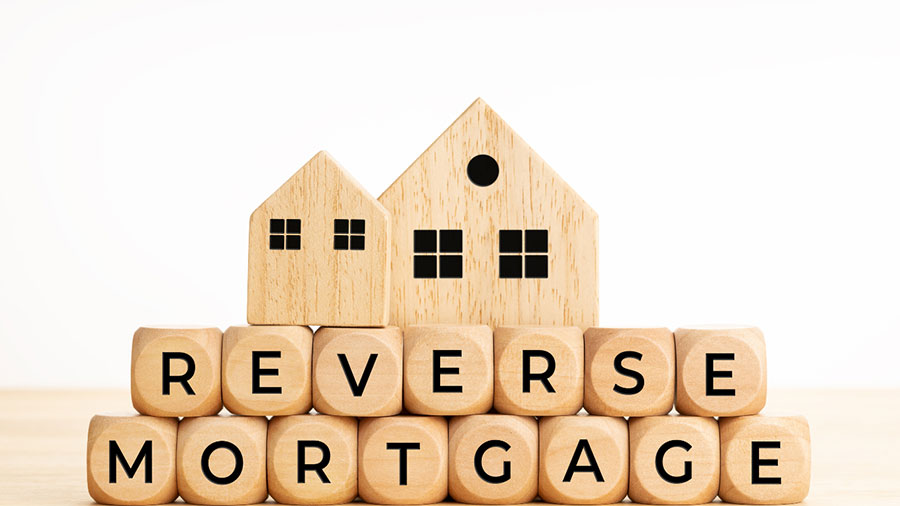All About Different Types of Loans for Homes in Australia
Home » All About Different Types of Loans for Homes in Australia
Are you considering purchasing a home in Australia but feeling overwhelmed by the numerous loan options? Worry not! This comprehensive guide will walk you through the different home loan types, interest rate options, repayment structures, and specialised loans to help you make an informed decision and find the perfect solution for your needs. Let’s dive in!
This guide will provide tips on:
Understanding home loan purposes is essential for securing a mortgage.
Different types of home loans cater to other uses and can save time and money if chosen correctly.
Exploring interest rate options, repayment structures, specialised home loan types & first-time home buyer assistance are important considerations when assessing one’s financial needs & goals.

When securing a mortgage, understanding the various types of home loans is crucial. The primary types of home loans in Australia are owner-occupier and investor loans. These loans cater to different purposes, either for purchasing a property for a personal residence or as an investment.
Knowing the differences between these loans and finding the right one for your situation can save time and money in the long run.
Owner-occupier loans or mortgages are financial products specifically designed for individuals who intend to reside in the property they are purchasing. These loans often come with competitive interest rates and terms tailored to accommodate the needs of homeowners. A notable example is the Green Home Loan, which offers a competitive interest rate for properties with a 7 Star NatHERS Energy Efficiency rating or a 7-star Residential Efficiency Scorecard rating.

On the other hand, investment property loans cater to those who wish to buy a property for investment or rental purposes. As investors are generally deemed riskier borrowers, these loans typically have stricter eligibility criteria and higher interest rates than owner-occupier loans. However, one silver lining is that interest payments on investment home loans may be eligible for tax deductions.
Understanding the difference between owner-occupier and investment property loans is crucial when embarking on your property investment journey. With the right loan, you can maximise your investment returns while minimising your financial risks.

Interest rates play a significant role in determining the overall cost of your home loan. The two primary categories of home loans are fixed rate and variable rate loans. Each of these options has its own set of advantages and disadvantages.
By understanding the key differences between fixed and variable rate loans, you can decide which option best suits your financial needs and goals.
Fixed rate loans offer the security of a locked-in interest rate for a predetermined period, typically ranging from one to five years. This assures borrowers know exactly how much their mortgage repayments will be during the fixed period.
However, borrowers may not benefit from decreasing interest rates in the market, as their rate remains fixed. Moreover, fixed rate loans may have certain limitations, such as restrictions on extra repayments and a lack of features like offset accounts or redraw facilities.
It’s essential to assess your financial goals and priorities before opting for a fixed rate loan to ensure it aligns with your needs.
Variable rate loans, conversely, have interest rates that fluctuate depending on market conditions. These loans usually provide the most competitive interest rates in the market. They can also have features like linking an offset account, facilitating redraws, and allowing extra repayments. However, the downside is the uncertainty of interest rate changes, which could lead to higher repayments if rates rise.
Deciding between a fixed and variable rate loan depends on your risk tolerance and financial goals. While a fixed rate loan offers stability, a variable rate loan provides flexibility and potential savings if interest rates decrease. Consider your needs and preferences before making a decision.

The repayment structure is another crucial factor when choosing a home loan. There are two repayment structures for home loans: principal-and-interest (P&I) and interest-only (IO). In a P&I loan, borrowers pay both the principal and interest, while an IO loan allows borrowers to delay repaying the principal for the first few years of the loan.
P&I repayments consist of both the principal amount borrowed and the interest charged. These repayments are utilised to reduce the principal balance of the loan and the accrued interest, ultimately resulting in the full repayment of the loan by the end of the term.
Choosing a P&I loan means you’ll be steadily paying down the loan balance, building equity in your property, and reducing the overall interest paid. This type of loan is ideal for borrowers who prioritise long-term financial security and the eventual ownership of their homes.
On the other hand, IO loans defer the repayment of the principal for up to five years, during which only the interest component is paid. This results in lower repayments during the IO period, which can be beneficial for property investors seeking negative gearing or those with fluctuating incomes.
However, after the IO period ends, the loan will revert to a P&I loan, leading to higher repayments. While IO loans may offer short-term financial relief, they can result in higher overall interest payments compared to P&I loans.
When considering an IO, weighing the short-term benefits against the long-term costs is crucial.

Specialised home loan types, such as construction loans, guarantor loans, and low-doc loans, are available for specific needs and circumstances. These loans cater to niche requirements and can provide tailored solutions for borrowers with unique situations.
Let’s explore each of these specialised loan types in more detail.
Construction loans are designed to finance building a new home or undertaking a structural renovation. These loans are short-term by nature, with a variable interest rate, and are changed to owner-occupied or investment property loans upon completion of the construction. One key feature of construction loans is the progressive draw-down, which allows borrowers to access portions of the loan amount at various stages of the construction process.
When applying for a construction loan, be prepared to provide council-approved plans, building specifications, a fixed-price building contract with a licensed builder, and any applicable insurance documentation.
Construction loans can be an excellent solution for those looking to build their dream home from the ground up or significantly improve their existing property.
Guarantor loans involve a third party, such as a family member or parents, who agrees to provide their property as security to the loan. They will also assume responsibility for repaying the loan if the borrower cannot fulfil their obligation. This type of loan can be particularly helpful for first-time homebuyers or those with limited savings for a deposit, as it allows them to access a mortgage with lower interest rates.
However, it’s essential to understand the potential risks for the guarantor. If the borrower fails to make repayments, the guarantor may be held liable and required to make those repayments on their behalf, or worst, be forced to sell their property to repay the loan. Both the borrower and the guarantor should carefully assess the financial implications before entering into a guarantor loan agreement.
Low-doc loans are designed for self-employed borrowers who may have a different quantity of documentation than a salaried borrower. These loans require fewer documents than a traditional loan, such as a letter from their accountant, Business Activity Statements (BAS), income declaration forms, or other types of documentation to demonstrate their earnings.
It’s important to note that low-doc loans typically feature higher interest rates and fees in comparison to other loan types, and they are less widely available from mainstream lenders. However, for self-employed individuals or small business owners who may struggle to secure a traditional loan, low-doc loans can be a viable option for financing a home purchase.

Home equity and line of credit loans offer unique borrowing opportunities for homeowners. These loans allow you to borrow against the equity you’ve built up in your home, providing access to funds for various purposes such as renovations, investments, or emergencies.
Let’s delve deeper into home equity and line of credit loans to better understand how they can help you leverage your property’s value.
Line of credit loans, or home equity loans, allow borrowers to utilise their mortgage to finance other purchases. The amount you can borrow with a line of credit loan depends on the equity you have in your property, and you can access the funds as a lump sum or incrementally. These loans typically have an interest-only repayment structure, giving borrowers flexibility in managing their finances. Although a line of credit and home equity loans typically have higher interest rates than other home loans, they are attractive options for borrowers looking to access additional funds whilst only paying the interest on the funds they use.
It’s important to be aware of the potential risks associated with a line of credit loans. If you choose to overdraw your line of credit, you’ll need to make additional repayments to offset the borrowed amount. Otherwise, you may risk the closure of the facility. Consider your financial goals and needs before deciding whether a line of credit loan is right for you.

Facing financial challenges doesn’t mean homeownership is out of reach. Several solutions are available to help individuals with unique financial situations secure a home loan.
This section will explore bad credit mortgages, non-conforming loans, and reverse mortgages – options that may provide a viable path to homeownership despite challenging financial circumstances.
Bad credit mortgages are designed for individuals with a sub-standard credit history. These loans can be costlier than traditional mortgages, but they provide an opportunity for people with bad or impaired credit to become homeowners. Lenders specialising in bad credit mortgages typically employ a meticulous approach when evaluating credit files, considering the circumstances that led to the adverse credit history.
While bad credit mortgages may come with higher interest rates and fees, they can offer a lifeline to those who may not qualify for traditional home loans. If you have a poor credit history, it’s essential to research your options and work with a lender who understands your unique circumstances.
Non-conforming loans present a viable alternative to traditional bank lending, providing financial solutions for borrowers who do not meet standard lending criteria. Here in Australia, some estimate that approximately 20% of people could benefit from non-conforming loans due to various circumstances that render them ineligible for prime lender credit.
Such circumstances may include:
Tighter lending criteria,
An unfavourable risk profile from the lender’s perspective,
A history of bad credit,
Changes in bank policies, or
Automatic decline due to a low credit score or issues with Mortgage Insurance.
Additionally, these loans can be especially beneficial for self-employed individuals who are unable to verify their income through conventional means.
Essentially, a non-conforming home loan offers a lifeline to borrowers who fall outside the typical parameters set by banks and other major lenders. These loans are of particular interest to those with a less-than-stellar credit record, a history of bankruptcy, or difficulties in income verification due to self-employment.

Reverse mortgages are home loans available exclusively to those aged 60 and over in Australia. This loan allows seniors to access home equity, providing additional funds to cover retirement expenses or supplement their income. Reverse mortgages do not require regular repayments, as the loan is settled when the borrower sells their home, moves into aged care, or passes away.
Reverse mortgages can be a beneficial option for seniors who require additional funds during their retirement years. However, it’s essential to understand the potential risks and carefully consider whether a reverse mortgage is the right solution for your financial needs.
Entering the property market for the first time can be daunting, but various forms of assistance are available to help ease the process. This section explores first-home buyer loans and government schemes designed to support first-time homebuyers in Australia.
With the right assistance, achieving the dream of homeownership can become a reality.
First-home buyer loans are specifically designed for individuals purchasing their first home. These loans often come with additional features and conditions that cater to the needs of first-time homebuyers, such as lower deposit requirements or waived fees. Government initiatives like the First Home Guarantee and the First Home Owner Grant are also available to support first-time homebuyers in Australia.
While first-home buyer loans can provide valuable assistance, it’s important to be aware of the potential financial risks associated with these loans, such as job security and income growth. Thorough research and understanding the available options can help you make an informed decision and find the right loan for your needs.
The Australian and State governments offer several grants and schemes to support first-time homebuyers, including the First Home Owner Grant (FHOG) and the Home Guarantee Scheme (HGS). The FHOG provides a lump sum payment to first-home buyers, assisting them in purchasing a new home or vacant land for construction.
The HGS, which includes the First Home Guarantee, the Regional First Home Buyer Guarantee and Family Home Guarantee, allow eligible first-home buyers to purchase a home with a deposit as low as 5% or 2%, respectively.

Bridging loans can provide a valuable solution for homeowners looking to buy a new property before selling their existing one. These loans help cover the financial shortfall during the transition period and can effectively secure your dream home without waiting for your current property to sell.
Let’s look at the features and considerations of bridging loans.
Interest-only rates are a common feature of bridging loans, allowing borrowers to make smaller repayments during the loan term. This can provide temporary financial relief and make the transition between properties more manageable.
However, interest-only rates typically come with higher interest rates compared to principal and interest rates, meaning the overall cost of the loan may be higher in the long run.
When considering a bridging loan, weighing the short-term benefits of interest-only rates against the long-term costs is essential.
While bridging loans can offer a convenient solution for those looking to purchase a new property before selling their current one, it’s important to know these loans’ potential risks and benefits. The primary risk is the uncertainty of the property market and the possibility that the sale of your existing property may take longer than anticipated. It could result in higher overall interest payments and potential financial stress.
On the other hand, bridging loans can provide a valuable means of securing your new property without waiting to sell your existing home, offering flexibility and convenience during the transition period.
Understanding the various types of home loans available in Australia is crucial in making informed decisions when purchasing a home or investment property. From fixed and variable rate loans to specialised loans and government schemes, there’s a loan option to suit every need and circumstance. By carefully assessing your financial situation, goals, and preferences, you can find the perfect loan solution to help you achieve your dreams of homeownership. Remember, knowledge is power – and with the right information, you can confidently navigate the world of home loans.
Australia’s leading four banks have established predictions concerning the trajectory of cash rate movements for the coming years. By the end of 2024, the interest rate for owner-occupier loans on a variable rate could increase to 6.86%. This prediction suggests a notable shift for many Australian homeowners.
Home loans can be tailored to include costs related to renovations. In instances where significant construction or renovation is required, including building on vacant land, a unique solution is available – a construction loan. This loan operates differently from your standard home mortgage; rather than receiving a large lump sum upfront, the funds are paid in stages in line with the progression of the construction or renovation work. This process ensures a steady flow of funding, aligning with the development milestones of your project.
Like many other countries, home loans generally utilise a compound interest model in Australia. This system calculates interest not only on the initial amount borrowed but also on the interest accumulated over past loan periods.
However, it’s key to note that home loans are usually based on an “amortising” system. This implies that with every repayment you make, a portion of the principal and the interest is paid off. As you keep paying off the principal amount, the interest is calculated on a gradually decreasing amount.
The specifics of how frequently the interest is compounded – daily, monthly, or yearly – can vary. These details will be based on the specific terms of your loan agreement and can significantly impact the total interest you’ll end up paying over the life of the loan.
Did you know that ‘mortgage’ is just a fancy term for a loan tied up with your house? You tell the bank, “Hey, I’ll give you my house if I can’t pay back this loan.” That’s why they call it a ‘secured loan’ – because your home secures the home loan. If you stumble on payments, your bank might decide to take over the house.
